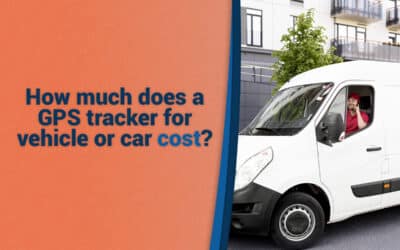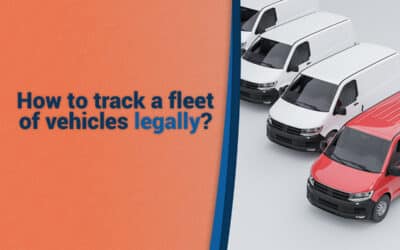Post – 27/08/2020
Lean IoT: the key to managing your returnable assets
IoT, for Internet of Things, is now a common term that is still too easily associated with highway-to-pirate or at best gadget-for-geek! However, it is a reality that should be seriously considered, as it brings real innovation under its false appearance of reheated technology.
In this article we will discuss the use of IoT in industry and more specifically for returnable assets. We will go further by defining the concept of “Lean IoT”, which materializes the use of the latest IoT technologies in service of the universal principles of Lean Manufacturing, and thus allow to take the IoT out of its image of gadget to give it a real industrial dimension associated with profitability.
What are Returnable Assets?
Returnable Assets (also called Returnable Shipping Assets) are goods used in industry, going through a cycle and returning to their starting point. They are generally carriers used to transport products (pallets, crates, containers, trays, trolleys, racks, wire cages, bins, trailers…), but also more complex industrial tools or tools requiring metrology cycles. We will focus here on the first category. They have one thing in common:
- They individually cost almost nothing.
- They circulate in huge volumes.
- They have a very long service life.
Another common characteristic of these goods is that they are by nature scattered all over the country/world and thus out of the sight of their managers. Their management is often manual and unchanged for a long time and their low cost tends to underestimate the importance of a proper monitoring.
What is IoT?
To put it in a nutshell, the Internet of Things consists in connecting any object to the Internet, giving it the ability to send proprioceptive or exteroceptive data (a state, a temperature, a pressure, a GPS position …) to a “cloud” via the Internet network. Connecting all objects, even the most insignificant ones, therefore requires to do so at minimal costs, both in terms of hardware/software and energy consumption. The Internet of Things initially focused on machine-to-machine communication (M2M) and now addresses everyday objects and industrial assets, which is of interest to us here.
There are a multitude of systems for connecting objects. The emergence of low energy wireless communication technologies such as RFID, Bluetooth Low Energy (BLE), Wi-Fi, LPWAN … offers a solution adapted to each use case (close or very long distance communication, with or without infrastructure…). For each problem, there is an IoT solution: we are not going to use the same system if we want to track components in an aircraft production workshop or a container between multiple countries, and this also takes into account the cost of the object we are equipping.
Returnable assets challenges? reducing wastes!
It is necessary to look at the issues and the chaotic path of consigned goods to understand how the IoT can help. Concretely, for the majority of them:
- They’re lost
- They are stolen
- They are destroyed
- They are damaged
- They’re sent to the wrong place
- They wait too long in the wrong place.
The direct result is:
- Replacement costs (buying new equipment)
- Repair costs
- Overstocking costs to compensate for the loss, consequences of waiting, loss and theft
- Storage costs, consequences of overstocking
- Additional transportation costs to transport lost goods.
Lean Management: principes
Let’s go back to the principles of Lean Management which consists in reducing losses and thus reducing cycles and inventories without affecting the intrinsic productivity of people. Lean has characterized 7 types of losses called MUDAs, which are a bit like the 7 deadly sins of the industry:
- Transport
- Inventory
- Motion
- Waiting
- Over-Processing
- Overproduction
- Defects
Unbelievable, there are practically all 7 MUDAs in the cycle of a returnable asset!
Any industry that implements an optimization of its Lean production starts by finding and driving out waste (Muda). Wouldn’t it be time to do the same thing on the scale of returnable assets in a closed cycle?
However, what is simple to do in a factory where one has a certain control of events, is much less so for returnable assets on which we have no information as to position, movement, lead time… That is why the first thing to do is to get this information.
Think Lean IoT
We can only control well what we measure, so we have to start by measuring, and to do that we have to know:
- The real-time position of assets
- Their behavior
- Their lead time
- All the essential metrics to run your business well.
How do you do it? That’s where the IoT comes in!
If we admit that it is possible to put a GPS and a satellite communication on a container at several thousand dollars, we cannot do it on a wooden pallet at 10 USD . At this price, the means of capturing and sending the data must also cost almost nothing. Another challenge is that of autonomy: returnable assets go far and long, sometimes several months! So our low-cost sensor must also have a huge autonomy… that it is almost self-sufficient.
This low cost / long autonomy dyptic was not possible with traditional GSM systems. IoT solutions such as LPWAN now offer this possibility. I insist on the fact that these technologies are new and offer a new paradigm for track&trace, which was not accessible a few years ago.
Low-Power Wide-Area Network (LPWAN) technologies such as Sigfox or LoRa make it possible to track objects at very low hardware and connectivity costs for a very long time, which makes it possible to equip assets that are less and less expensive than would have been unthinkable a few years ago.
Data is the fuel that the platform will refine.
The first step in Lean IoT is to have a technology that allows assets to be equipped at a compatible price and to generate raw data. However, this data is only the fuel! The added value comes from the analysis proposed by the IoT platform associated with the hardware.
It is this analysis that will allow to find lost assets, to measure lead time, to know the state of stocks in real time, to automatically identify abnormalities among millions of assets… At this stage, the computing power of computers and the increasingly powerful AI algorithms available on IoT platforms allow a drastic and intelligent optimization of the asset consignment cycle.
We are moving from the Stone Age to the Iron Age.
Let’s talk savings.
The goal is to save money! For the pallet manufacturer, pallets are gold in wood. There are several billion pallets in Europe and each manufacturer performs several hundred million cycles per year. It is easy to understand that the savings are made on the volume and therefore the importance of low equipment costs is high.
According to the industry, it is estimated that up to 40% of returnable assets are lost and that more than 20% of the annual logistics budget is allocated to equipment replacement. Added to this is the unnecessary overstock resulting from other MUDAs, which also represents more than 20% of the normally required stock.
This is just one example and the cost that can be allocated to the digitization of returnable assets will largely depend on the cost of losses, but the principle remains the same and it is very easy to calculate the break-even point for the implementation of a Lean IoT solution.
What about you? How is it going in your industry? Have you ever asked yourself the right questions about loss rates, cycles, overstock, repairs, customer satisfaction?
Deploying an IoT solution for noobs
We are moving from an era where we managed assets with Excel blindly to a new era where we manage them in real time like in a war room. Change cannot be improvised and requires asking the right questions. It is not enough to buy sensors on Aliexpress and put them on the assets to succeed in this digital transformation.
Installing a Lean IoT solution for returnable assets is a matter for professionals. Below are some non-exhaustive tips to understand the change if you are confronted by this issue.
- Think ROI and not technology: calculating the return on investment will allow you to orient yourself towards the best solution.
- Define your KPIs: the profitability of the solution will depend on the relevance of the analysis provided by the platform and thus on the indicators to be set up. A phase of reflection on these indicators is necessary.
- Each technology has its use case: there are no bad solutions, but unsuitable solutions. Using BLE, LPWAN, WiFi, RFID, NFC is very different and is specific to precise uses.
- Choose the right settings: once a solution is found, the hardware settings are important, the autonomy must be optimized, the settings must be optimized too. Here again they vary a lot from one case to another. Call in the right specialists.
- Make a serious POC: before moving on to a large volume a solution evaluation phase may be necessary. Do not ignore this phase and do it seriously, on a representative sample of assets. Make a complete evaluation. Pay the POC, don’t just try it yourself with the means at hand.
- CAPEX or OPEX? It all depends on your business model, the type of asset being monitored, your sensitivity to recurring investments or costs. The OPEX model is widespread but it is quite possible to invest in hardware and pay the platform and connectivity costs afterwards.
- Include IT from the start: your IT department will put a spanner in the works if it is not involved as soon as possible, because it may have already evaluated solutions, and also because a large number of parameters depend on it (data management)… especially if there is an infrastructure to be connected to the company’s Wi-Fi or ethernet network.
- Avoid the infrastructure at all costs: Connecting a router, a beacon, a base station to a corporate network is a complication, as it will require maintenance, electricity, and represent an additional entry point for hackers.
Check other posts:
How much does a GPS tracker for car or vehicle cost?
When companies or individuals need to geolocate a car, a vehicle or a fleet of vehicles, one of the first questions asked concerns the cost of the solution: "What is the cost of a GPS tracker?" "Is there a subscription to pay?", and specifically for companies: "What...
How to track a fleet of vehicles legally? Track a company vehicle: the legal steps.
In companies, and more particularly when the company's activity requires a global monitoring of the fleet of vehicles, a practice is gradually becoming widespread. It is the use of GPS trackers for cars, also installed inside scooters, trucks, utilities, construction...
A GPS tracker without a subscription?
A GPS tracker without a subscription?Article - 23/05/2022Can a real-time GPS tracker really be subscription-free? What are the uses for which it is possible to use a GPS tracker without a subscription?When searching for a GPS tracker, the consumer is aware of the...



